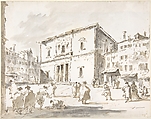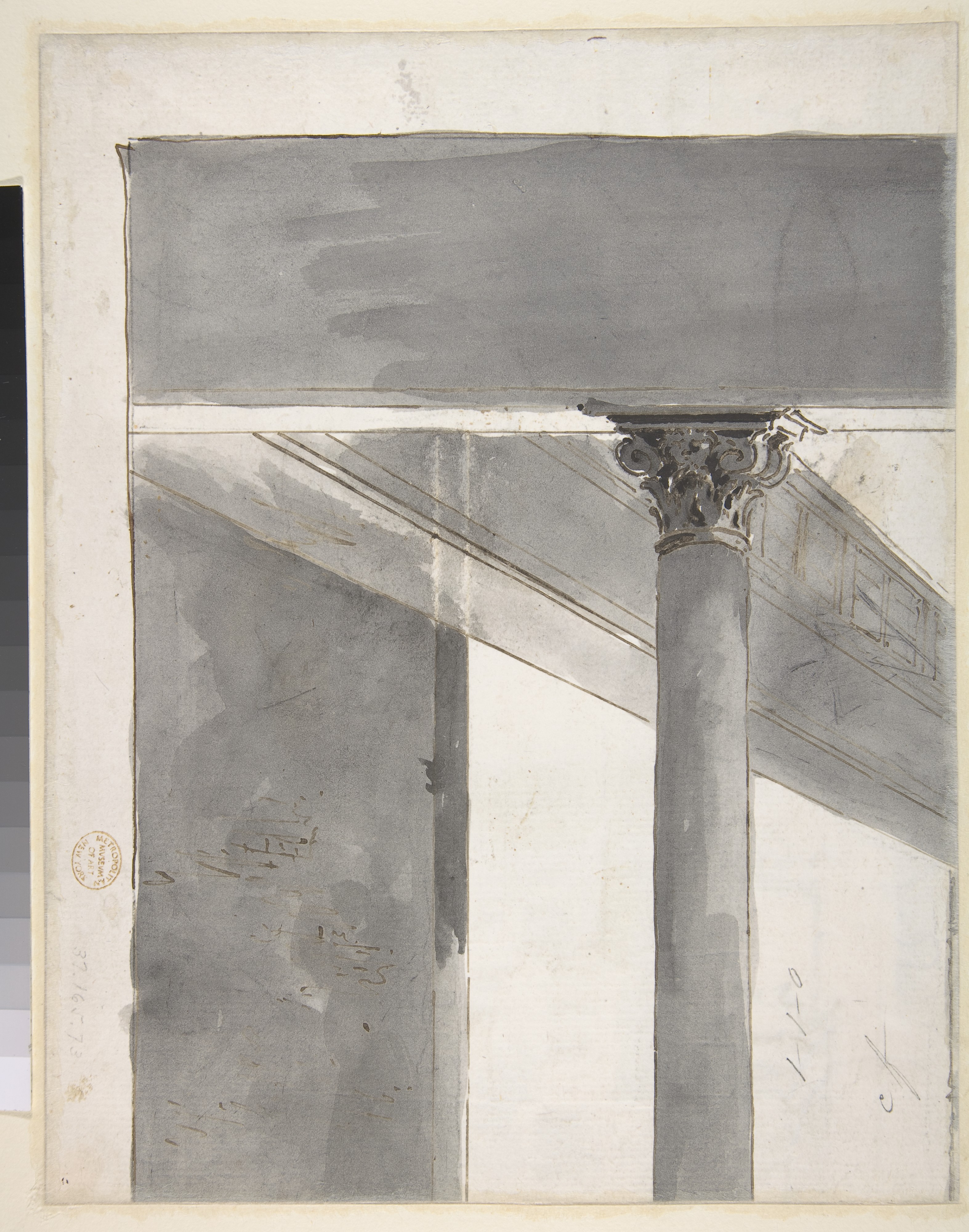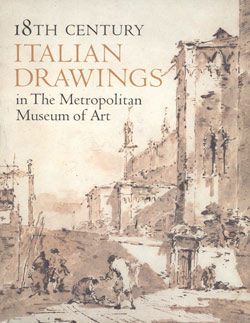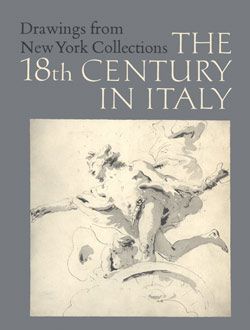The Fenice Theater in Venice (recto); Fragment of a Larger Drawing Representing Part of a Column and a Cornice (verso)
Francesco Guardi Italian
Giacomo Guardi Italian
Not on view
This view of the Teatro La Fenice (Fenice Theater) is one of Francesco Guardi's last drawings. The Fenice, the work of the architect Giovanni Antonio Silva, was begun in 1790 and opened in April 1792, less than a year before Francesco Guardi's death. The drawing is well preserved, although James Byam Shaw has suggested that the accents of gray wash, used to strengthen the shadows in the foreground and on the theater and adjacent buildings, may have been added by Giacomo Guardi. In any case the son is entirely responsible for the drawing of architecture on the reverse of the sheet.
A freer view of the Fenice seen from a different angle is in the Museo Correr, Venice (Rodolfo Pallucchini, I disegni del Guardi al Museo Correr di Venezia, Venice,1943, fig. 87; Antonio Morassi, Tutti i disegni di Antonio, Francesco e Giacomo Guardi, Venice, 1975, no. 404, fig. 406; Terisio Pignatti, Disegni antichi del Museo Correr di Venezia, vol. 3, Venice, 1983, no. 662, repr.). A further drawing by Francesco of the theater seen from yet another angle was sold in New York in 1980 (Sotheby Parke Bernet, January 9, 1980, no. 74, repr.; Antonio Morassi, Tutti i disegni di Antonio, Francesco e Giacomo Guardi, Venice, 1975, no. 406, fig. 409). It is interesting to note that on the reverse of this third drawing of the Fenice by Francesco there is also an architectural design in the hand of Giacomo Guardi.
This image cannot be enlarged, viewed at full screen, or downloaded.
This artwork is meant to be viewed from right to left. Scroll left to view more.







